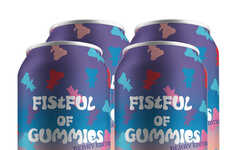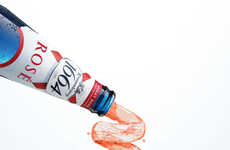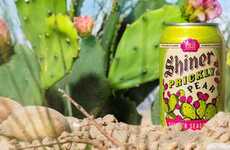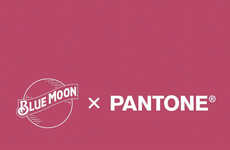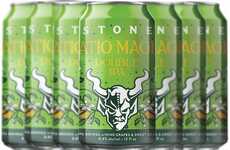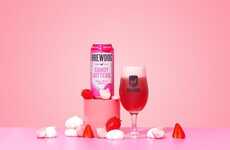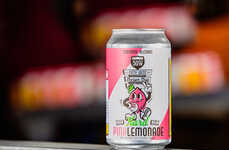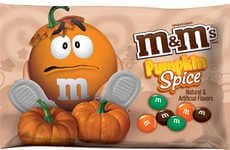
This Pink Beer is Naturally Dyed with Tiny South American Bugs
Katherine Pendrill — July 14, 2015 — Lifestyle
References: eaglerockbrewery & munchies.vice
One California brewery is making pink beer by using insects to achieve an unusual rosy hue. While there are other pink beers on the market, most are colored using synthetic dyes. The Eagle Rock Brewery has found a more natural source of red dye in the form of South American insects.
To achieve its deep pink color, the Eagle Rock beers rely on the use of a pea-sized bug called 'Cochineal.' These bugs are native to Central and South America, where they feed on crimson juices from prickly pear cactus plants. After the bugs are harvested, they are dried and then crushed in order to create a natural red dye, which is referred to as "cochineal extract." Aside from the red dye, the Eagle Rock beer achieves its brilliant pink color through the addition of pomegranate, raspberries, strawberries and hibiscus.
The pink beer is not just a novelty product, but also a promotional brew that is offered at events raising money for breast cancer awareness.
To achieve its deep pink color, the Eagle Rock beers rely on the use of a pea-sized bug called 'Cochineal.' These bugs are native to Central and South America, where they feed on crimson juices from prickly pear cactus plants. After the bugs are harvested, they are dried and then crushed in order to create a natural red dye, which is referred to as "cochineal extract." Aside from the red dye, the Eagle Rock beer achieves its brilliant pink color through the addition of pomegranate, raspberries, strawberries and hibiscus.
The pink beer is not just a novelty product, but also a promotional brew that is offered at events raising money for breast cancer awareness.
Trend Themes
1. Natural Colorants - Utilizing natural sources for coloration in food and beverages presents an opportunity for innovative and sustainable product development.
2. Alternative Brewing Ingredients - Exploring unconventional ingredients like insects offers brewers a chance to create unique and intriguing flavors in their craft beverages.
3. Cause Marketing - Combining product promotion with supporting a charitable cause can generate positive brand image and engage consumers.
Industry Implications
1. Food and Beverage - The food and beverage industry can explore natural colorants and alternative ingredients to create visually appealing and inventive products.
2. Craft Brewing - Craft breweries can experiment with unique ingredients like insects to differentiate their offerings and cater to adventurous consumers.
3. Non-profit and Charity - Non-profit organizations and charity events can collaborate with businesses to promote their cause through innovative and eye-catching products.
0.4
Score
Popularity
Activity
Freshness


